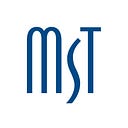
MST’s New Scleral IOL Fixation Solutions Kit Standardizes the Yamane Technique
The new Scleral IOL Fixation Solutions Pack from MicroSurgical Technology (MST), provides every instrument required to fixate an intraocular lens (IOL) based on the Yamane approach.
In this sixth part of the MST Educational Series, Dr. Jason Jones discloses his experience as he uses the new MST Scleral IOL Fixation Solutions Pack with the Yamane double-needle procedure.
Jason Jones, MD, Jones Eye Clinic and Surgery Center, Sioux City, Iowa.
MST’s Scleral Fixation Solutions pack
The original concept behind the MST Scleral IOL Fixation Solutions Pack (SFP) evolved from a specific need for a better quality disposable hypodermic needle. The idea was to create a convenient kit, that put all the essential elements for the Yamane double-needle technique close to hand.

My preferred approach — The Yamane technique
I previously had a case where a patient presented with pseudoexfoliation syndrome with decentration of the lens in the bag. The lens and the bag needed to be replaced and there are several ways to do this. I have replaced lenses using the iris fixation method which allows for a small incision but depends on suture fixation to the iris. Alternatively, I have placed an anterior chamber lens or trans-scleral sutured posterior chamber IOL; however, these procedures demand a large incision. As such, my preferred approach is the Yamane technique, which benefits from a smaller incision. It is also sutureless and does not require glue, which can be an expensive cost. By choosing the Yamane technique, I gain a lot of efficiency in terms of cost and time while avoiding conjunctival or scleral dissection. With a surgical time of approximately 25–30 minutes, no pain, minimal invasion, and good post-operative recovery — this is my technique of choice when faced with a compromised capsular bag.
The critical steps of intrascleral IOL fixation with the double-needle technique
My preference is to sit temporally. I place needles into the superior and inferior conjunctiva. The openness of the orbit and fissure will determine whether I will have good or poor access to the needle insertion sites.
With poor access, you often need to displace the globe. If you are working superiorly you rotate the eye inferiorly to gain more access into that area, but then when you proceed to the other side, the needle interacts with the upper lid and speculum and can be pushed into the sclera. So, careful manipulation and good control over the needles are of high importance.

Getting the passage symmetric at both sides with the correct angulation — all the refined maneuvers in order to place the IOL in the eye correctly is, in my opinion, the most challenging aspect of the Yamane technique. However, it is a technique that is still evolving.
The critical steps involved in the technique are the creation of the tunnel and the position of that tunnel for the IOL centration.
The SFP eases the Yamane technique
- Key to success in this procedure is the low profile 30-gauge thin wall needles, which were a joy to work with — minimal movement, (three in a pack) featuring a specialized holder which allows for easy grasping and releasing.
- The low-profile hub is advantageous when manipulating the needle to ensure good control when creating scleral tunnels and when threading the haptic into the needle lumen in the anterior chamber.
- The lumen of the needle is wide enough for most three-piece IOL haptics and with a micro hub, it facilitates better needle control inside the eye.
- The needle holder, included in the SFP, is specifically designed to maneuver the low-profile hub needles in haptic externalization. The holder grabs the hub tightly in its relaxed state so that the surgeon has full control over the needle with a relaxed hand tension. The silicone stopper on the needle shaft helps with centration and reduces needle movements.
The SFP comes also with a centration marking system (includes a guide, caliper, and ink pad facilitating precision and accuracy in needle location at the insertion site), MVR blade, AC maintainer, and low-temperature cautery. Having all these instruments together in one pack saves time and makes the procedure more efficient and convenient.
For me, the tool that adds the greatest value to the procedure is the needles with their discrete low profile and excellent hub design features. The simplified needle delivery and retrieval are key benefits during the procedure.
Conclusion
The MST Scleral IOL Fixation Solutions Pack is designed by experts to help make IOL fixation more effective by having all necessary tools conveniently brought together for a successful surgery. For me, the needle design and execution is what I like the most with this pack.
Key Learnings
Tip for the novice — Watch an experienced surgeon in action as this is can be an intimidating procedure. Be aware videos are edited — skill and experience can only be achieved by practice and knowledge. Wet labs are available at most major ophthalmic meetings and offer a less intimidating introduction to the Yamane technique.
The novice will gain confidence with observation and practice — the SFP helps make things easier in terms of convenience for the trainee, ultimately raising efficiency.
This technique is one for the more experienced surgeon however SFP helps the trainee with the procedure in terms of efficiency and having all the essential tools in one pack saves time searching in the OR.
As we all know, the smaller incisions are preferred to larger ones and the design of the pack’s needles creates a neat and controllable stable approach.
